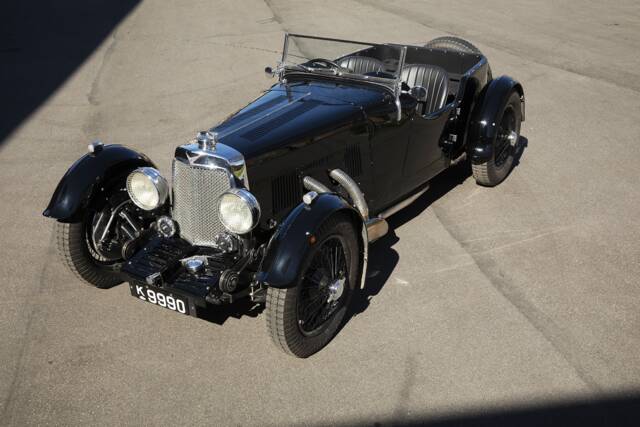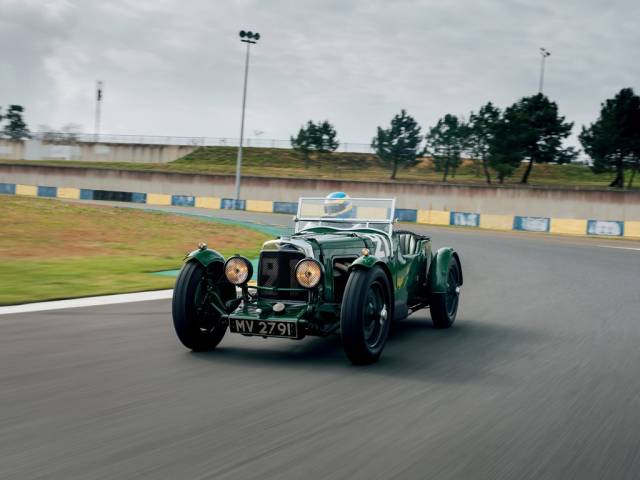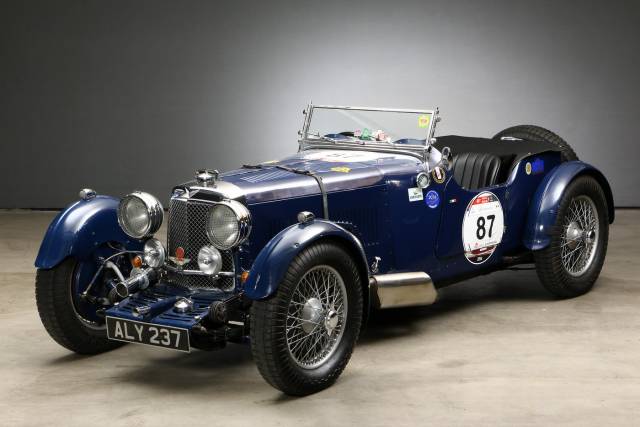- Coche
- Aston Martin
- Aston Martin Le Mans (1 oferta)
Aston Martin Le Mans classic cars for sale
Produced between 1932 and 1934, the Aston Martin Le Mans stands out as a highly-focused sports car of its time, available as a two- or four-seater. Its advanced four-cylinder engine, lightweight aluminium bodywork, and substantial motorsport credentials distinguish it in British automotive history.
Resultados de la búsqueda

1933 | Aston Martin Le Mans
Matching numbers. Mille Miglia Eligible. Known history. Long term ownership.
Aston Martin Le Mans listing references from Classic Trader
Below you will find listings related to your search that are no longer available on Classic Trader. Use this information to gain insight into availability, value trends, and current pricing for a "Aston Martin Le Mans" to make a more informed purchasing decision.

1932 | Aston Martin Le Mans
1932 Aston Martin Le Mans 'LM8'

1933 | Aston Martin Le Mans
1,5 Litre Le Mans - Short Chassis

1932 | Aston Martin Le Mans
LM8 - Works Car and Winner of Rudge Cup at Le Mans in 1932
History of the Aston Martin Le Mans
The Aston Martin Le Mans entered the British sports car scene in 1932, during a period of growing competition and technological innovation. Developed by Aston Martin to leverage the prestige of the Le Mans race, the car was engineered for both road and competition, setting itself apart with modern design and a focus on performance. Throughout the 1930s, the Aston Martin Le Mans gained a reputation at major racing events and exclusive gatherings, regularly appearing at endurance competitions and rallies. Its continued presence in the Mille Miglia and celebratory appearances—such as Aston Martin’s centenary—underscore its significance within the marque’s lineage and for classic car enthusiasts today.
Model series history
The original Aston Martin Le Mans was a direct development of Aston Martin's pre-war sports cars, following on from the highly regarded International model. The Le Mans model paved the way for later racing-influenced variants, including the Le Mans Special exhibited at the 1933 Olympia Motor Show. Subsequent racing versions, identified as the Le Mans Racing, solidified the link between production vehicles and factory competition efforts before the outbreak of World War II. There was no direct modern successor; later Aston Martins would take inspiration from this approach in creating limited-production, competition-inspired models.
Highlights of the Aston Martin Le Mans
The Le Mans' technical heart is its 1.5-litre, single overhead cam four-cylinder engine, which set benchmarks for its class in the early 1930s. Drum brakes on all four wheels and an aluminium body on a separate steel frame allowed for reduced weight and agile handling. Notably, the Le Mans boasted a track record in racing events like the Mille Miglia, and it achieved cultural recognition with appearances in film, notably in 'Raiders of the Lost Ark'.
Technical data
Special Editions and Collectible Models
The Aston Martin Le Mans Special, first shown at the 1933 Olympia Motor Show, introduced further refinements for competition use. Limited numbers and bespoke production for wealthy privateers underscore the rarity of these models. Racing variants known as Le Mans Racing gained their own reputation for performance and participation in important endurance events.
Engine and Performance, Transmission and Handling
The 1.5-litre engine’s responsive characteristics and robust construction made the Le Mans a competitive entry in pre-war sports car racing. The manual transmission provides direct, period-appropriate engagement. The extremely lightweight aluminium body and independent chassis ensure agile steering and competent braking—by the standards of the 1930s, given the four-wheel drum brake setup. The Le Mans’ racing pedigree is reflected in its lively acceleration and strong road holding for its era. • Aston Martin Le Mans Racing – Competition-tuned, lighter variants known for success in endurance events. • Aston Martin Le Mans Special – Introduced refinements and bespoke features for enthusiast collectors.
Interior, Comfort, Exterior and Design
With bodies crafted in aluminium over a steel frame, Le Mans models were produced in both two- and four-seat layouts. The exterior lines combine sporting dynamism and the discreet, upright British elegance of the period. Signature elements included cycle-style mudguards, external fuel fillers, and classic wire wheels. Interiors featured minimal instrumentation, leather upholstery, and the focused driving position typical of 1930s high-performance cars. Many examples featured custom coachwork and finishes specified by their first owners, leading to unique individual appearances across the small production run.
Other features and facts
The Aston Martin Le Mans holds a distinct place in automotive culture owing in part to its appearance in 'Raiders of the Lost Ark', where its allure even outweighs that of gold and jewellery. Its continued eligibility for historic motorsport and participation in events like the Mille Miglia ensure it remains an active presence among vintage performance cars.
Summary
The Aston Martin Le Mans encapsulates British pre-war sports car engineering. Its combination of competitive engineering, proven motorsport heritage, and individually tailored coachwork set it apart in both historical and contemporary collectors’ circles.
